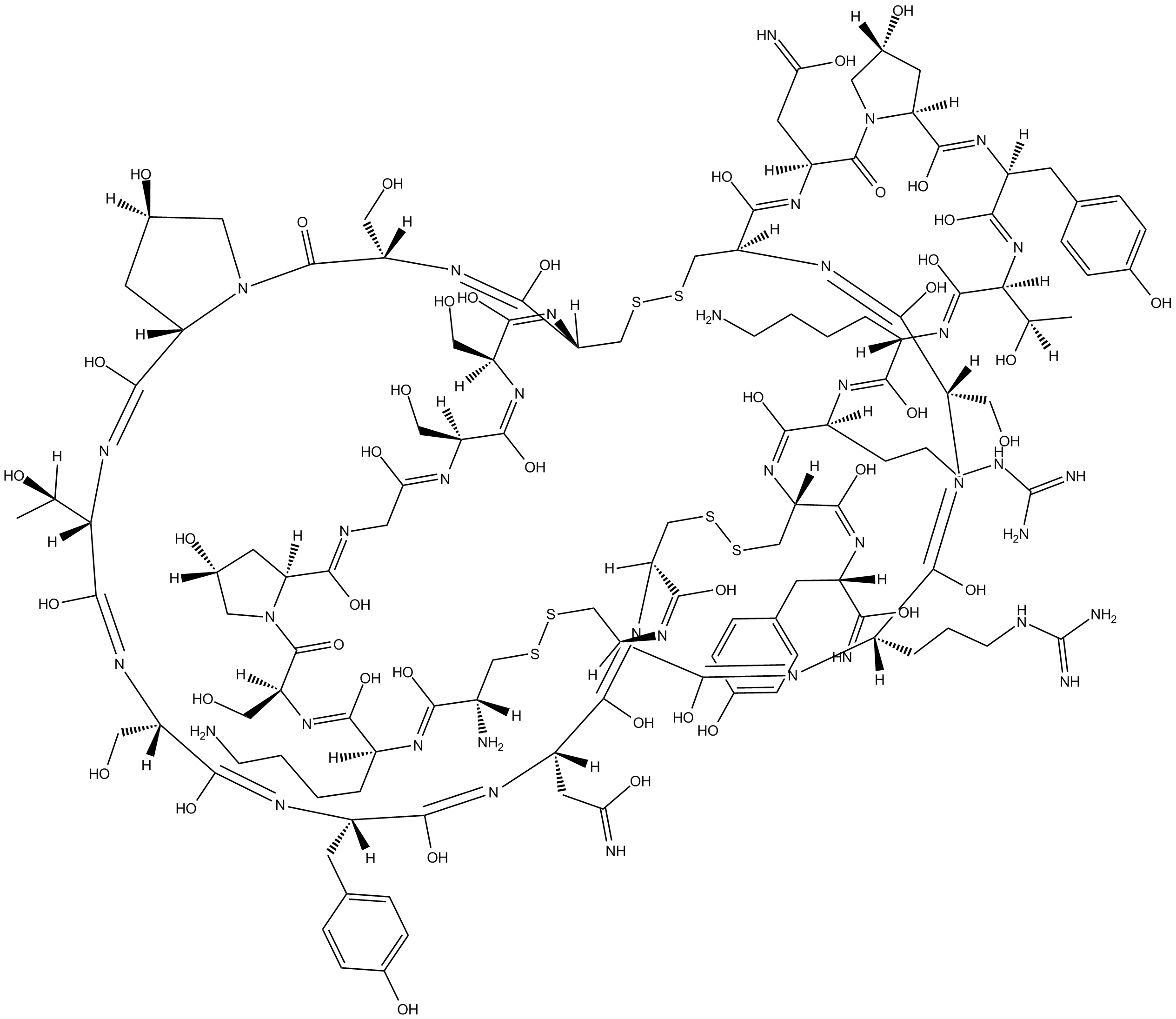ω-Conotoxin GVIA |
| Catalog No.GC13886 |
ω-Conotoxin GVIA est un inhibiteur du canal Ca2+ de type N.
Products are for research use only. Not for human use. We do not sell to patients.

Cas No.: 106375-28-4
Sample solution is provided at 25 µL, 10mM.
ω-Conotoxin GVIA is a cone snail toxin that selectively blocks N-type channels in neurons [1].
ω-Conotoxin GVIA binds to human neocortical, rat hippocampal, and chick brain synaptic plasma membranes (IC50s = 4.6, 60, and 150 pM, respectively, in radioligand binding assays) [3,4,5].
ω-Conotoxin GVIA markedly reduced the amplitude of the tetanic contractions of the tibialis anterior muscle in mice, but tetanic facilitation was not impaired. The muscle contractions elicited by direct electrical stimulation were not significantly modified by ω-Conotoxin GVIA. ω-Conotoxin GVIA did not had any significant changes in systemic blood pressure [5].
References:
[1]. H.D. Mansvelder, J.C. Stoof, K.S. Kits. Dihydropyridine block of ω-agatoxin IVA- and ω-conotoxin GVIA-sensitive Ca2+ channels in rat pituitary melanotropic cells.Eur. J. Pharmacol., 311 (1996), pp. 293-304
[2]. Feuerstein, T.J., Dooley, D.J., and Seeger, W. Inhibition of norepinephrine and acetylcholine release from human neocortex by ω-conotoxin GVIA. J. Pharmacol. Exp. Ther. 252(2), 778-785 (1990).
[3]. Lampe, R.A., Lo, M.M., Keith, R.A., et al. Effects of site-specific acetylation on ω-conotoxin GVIA binding and function. Biochemistry 32(13), 3255-3260 (1993).
[4]. Sato, K., Park, N.G., Kohno, T., et al. Role of basic residues for the binding of ω-conotoxin GVIA to N-type calcium channels. Biochem. Biophys. Res. Commun. 194(3), 1292-1296 (1993).
[5]: Rossoni G, Berti F, La Maestra L, Clementi F. ω-Conotoxin GVIA binds to and blocks rat neuromuscular junction. Neuroscience Letters. 1994;176:185-188.
Average Rating: 5 (Based on Reviews and 28 reference(s) in Google Scholar.)
GLPBIO products are for RESEARCH USE ONLY. Please make sure your review or question is research based.
Required fields are marked with *




















